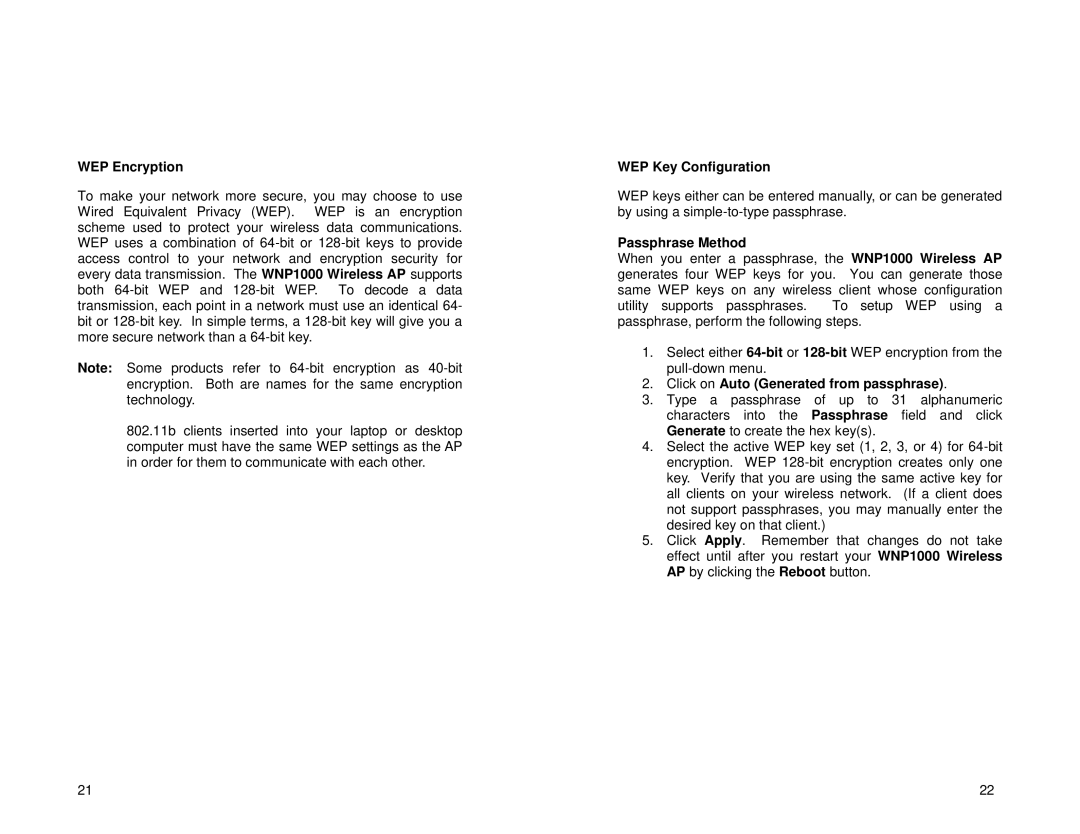WEP Encryption
To make your network more secure, you may choose to use Wired Equivalent Privacy (WEP). WEP is an encryption scheme used to protect your wireless data communications. WEP uses a combination of
Note: Some products refer to
802.11b clients inserted into your laptop or desktop computer must have the same WEP settings as the AP in order for them to communicate with each other.
WEP Key Configuration
WEP keys either can be entered manually, or can be generated by using a
Passphrase Method
When you enter a passphrase, the WNP1000 Wireless AP generates four WEP keys for you. You can generate those same WEP keys on any wireless client whose configuration
utility supports passphrases. To setup WEP using a passphrase, perform the following steps.
1.Select either
2.Click on Auto (Generated from passphrase).
3.Type a passphrase of up to 31 alphanumeric characters into the Passphrase field and click Generate to create the hex key(s).
4.Select the active WEP key set (1, 2, 3, or 4) for
5.Click Apply. Remember that changes do not take effect until after you restart your WNP1000 Wireless AP by clicking the Reboot button.
21 | 22 |
